Ayodhya marks temple completion with dhwajarohan, Modi calls moment ‘civilizational milestone’
Modi, accompanied by RSS chief Mohan Bhagwat and Uttar Pradesh Chief Minister Yogi Adityanath, called the moment “unique and divine,” saying it carried “the gratitude of a civilization” and signalled the healing of “centuries of pain.”
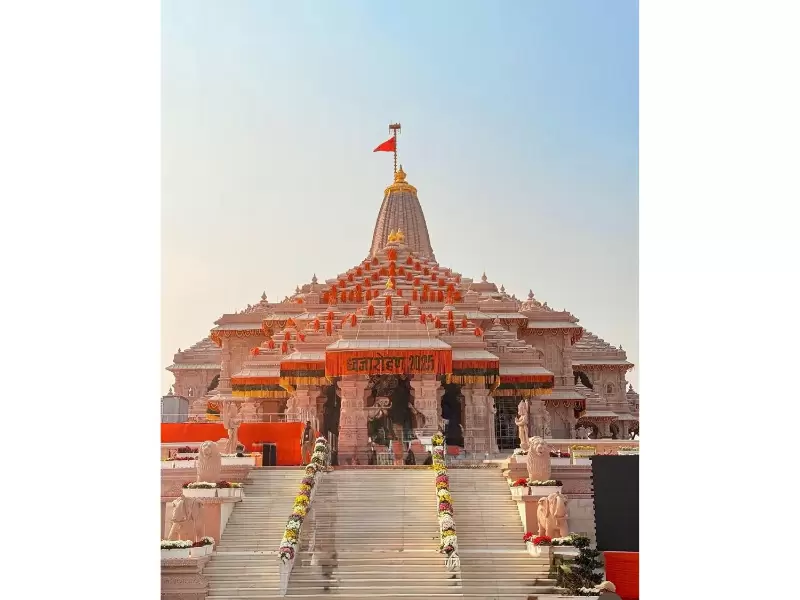 Dhwajarohan at Ramjanmabhoomi temple in India's Ayodhya / Courtesy: @ShreeRamTeerth via 'X'
Dhwajarohan at Ramjanmabhoomi temple in India's Ayodhya / Courtesy: @ShreeRamTeerth via 'X'
The Ram temple in Ayodhya entered what priests described as its “final state of completion” on Nov. 25 after Prime Minister Narendra Modi hoisted a 22-by-11-foot saffron flag atop the 161-foot shikhara, marking the Dhwajarohan Utsav—a ritual regarded as the temple’s formal awakening as a fully sovereign abode of Lord Ram.
The ceremony, held during the Abhijit Muhurat on Vivah Panchami, drew thousands of devotees and effectively closed a centuries-long chapter of contestation around the Ram Janmabhoomi site.
The flag, mounted on a 42-foot pole, rose slowly in the winter sun as chants of “Jai Shri Ram” rolled across the packed complex. Modi, accompanied by RSS chief Mohan Bhagwat and Uttar Pradesh Chief Minister Yogi Adityanath, called the moment “unique and divine,” saying it carried “the gratitude of a civilization” and signalled the healing of “centuries of pain.” In his brief address, the Prime Minister cast the ceremony as a civilizational landmark, remarking that “centuries-old wounds are finally finding closure.”
Nov. 25's ritual is distinct from the pran pratishtha of Jan. 22, 2024, which consecrated the Ram Lalla idol. Dhwajarohan, temple authorities said, is treated in tradition as the moment a temple transitions from a completed structure to a fully active, spiritually sovereign institution.
One senior priest described it as the act that “opens all 44 doors” of the mandir, activating every part of the complex for worship. The timing—Vivah Panchami, the day associated with the wedding of Ram and Sita—added further religious symbolism.
The flag itself carried dense iconography. Crafted over 25 days by a specialist parachute-fabric maker in Ahmedabad and vetted by Army engineers for wind resistance, it features a radiant golden sun symbolizing Ram’s Suryavanshi lineage, a prominent ‘Om,’ and embroidered motifs of the Kovidara tree—a symbol of purity and prosperity associated with descriptions in the Valmiki Ramayana. Trust officials said the design was meant to echo ancient textual references, including the hybrid Mandar-Parijat lineage of the Kovidara, which mythology links to Rishi Kashyap.
Ayodhya was dressed for the moment. Nearly 100 tonnes of flowers decorated the complex, while multilayer security—including anti-drone systems—ringed the site. Between 6,000 and 8,000 invitees attended, among them tribal representatives and families historically linked to the Ayodhya dispute, including descendants from both sides of the decades-long litigation. Trust members described their presence as “symbolic of reconciliation.”
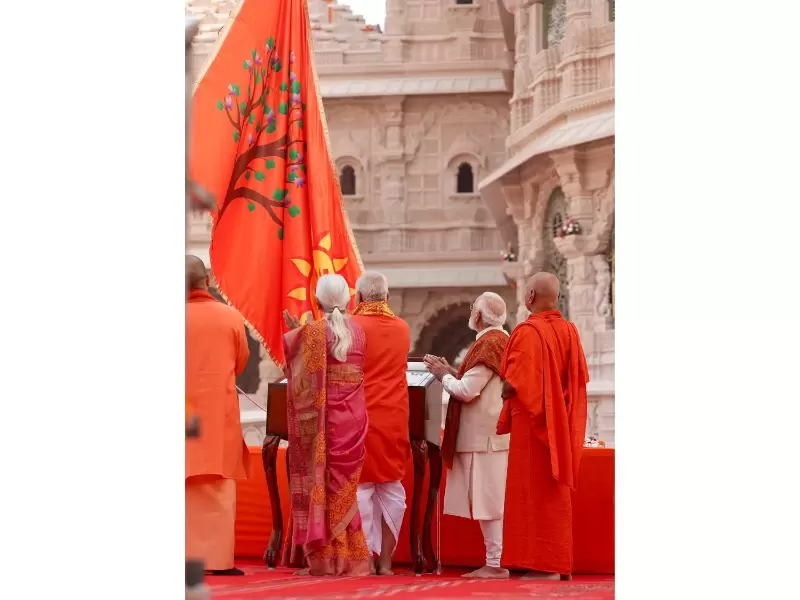 Indian Prime Minister Narendra Modi hoisting the saffron flag and performing dhwajarohan at the Ramjanmabhoomi temple in Ayodhya, India / Courtesy: @ShreeRamTeerth via 'X'
Indian Prime Minister Narendra Modi hoisting the saffron flag and performing dhwajarohan at the Ramjanmabhoomi temple in Ayodhya, India / Courtesy: @ShreeRamTeerth via 'X'Public darshan resumed later in the afternoon, though officials urged restraint to prevent overcrowding. Social media filled quickly with images of the rising flag, with users describing the moment as both emotional and historic.
The Dhwajarohan marks the architectural completion of the three-storey Nagara-style temple, which sits on a 380×250-foot platform and includes five intricately carved mandapas depicting episodes from the Valmiki Ramayana.
Shrines to Valmiki and Shabari are now functional, while an 800-meter Dravidian-style Parkota and outer facilities—including a museum, auditorium, and corridor—are expected to be completed by March 2026. The main temple, however, is now fully operational and “virajman,” as priests emphasized.
Modi used his speech to frame the temple not as a symbol of conflict but of closure and continuity. Calling Ram “the soul of India” and “the foundation of our consciousness,” he urged citizens to move “from devotion to duty” and invoked the principles of Ram Rajya—justice, unity, and compassion—as guiding values. He also paid tribute to those who had “kept the hope alive” during decades of legal and political struggle, including saints, activists, and ordinary supporters.
Tuesday’s ceremony, coming nearly a year after the pran pratishtha and more than a decade after the legal outcome that cleared the path for construction, effectively marks the final step in a long and often fractious timeline—from medieval destruction and colonial-era disputes to political mobilization, archaeological investigations, and the 2019 Supreme Court verdict.
As the saffron banner caught the wind and settled into place above the shikhara, Ayodhya—a city long shaped by faith, fracture, and contested memory—witnessed what many saw as the temple’s definitive rebirth.
For devotees, it was the closing of an old chapter and the unveiling of a new one in a project that has become both a national symbol and a global marker of India’s civilizational identity.
ADVERTISEMENT
ADVERTISEMENT
E Paper
Video



 R Suryamurthy
R Suryamurthy
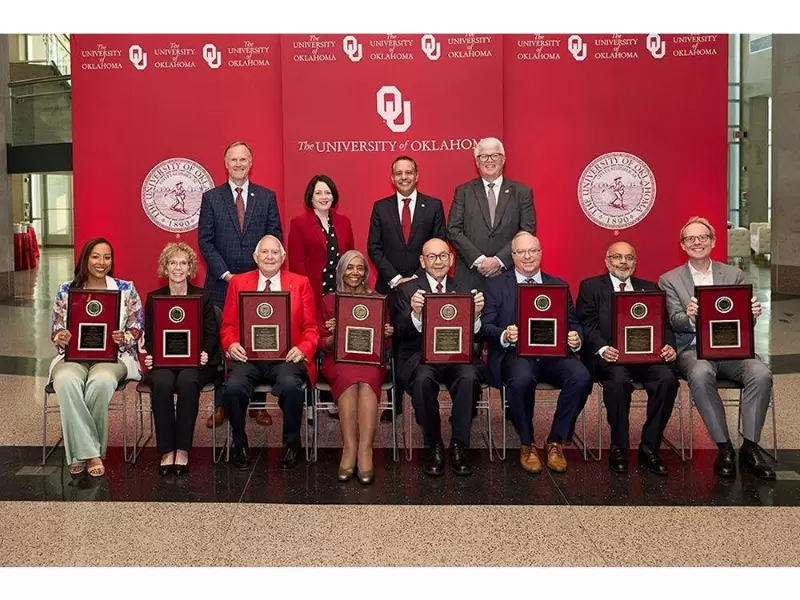
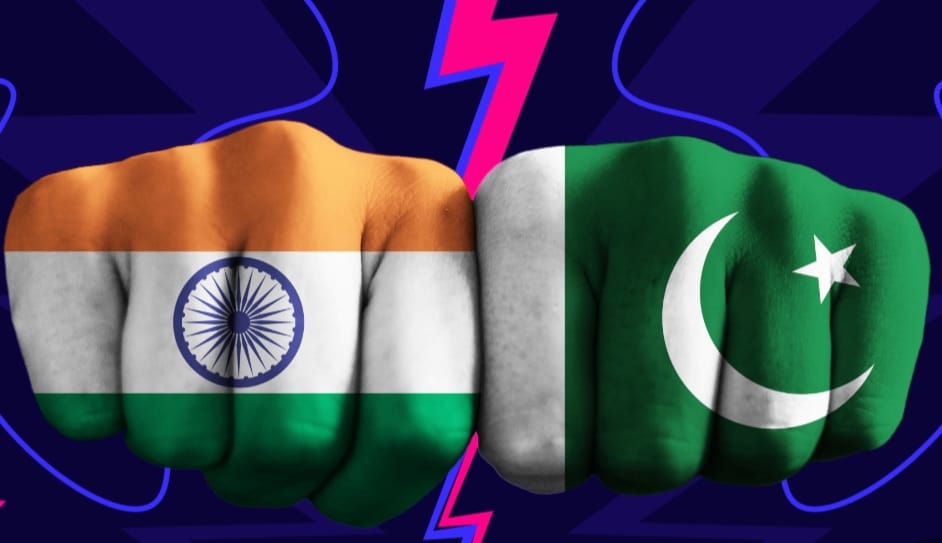

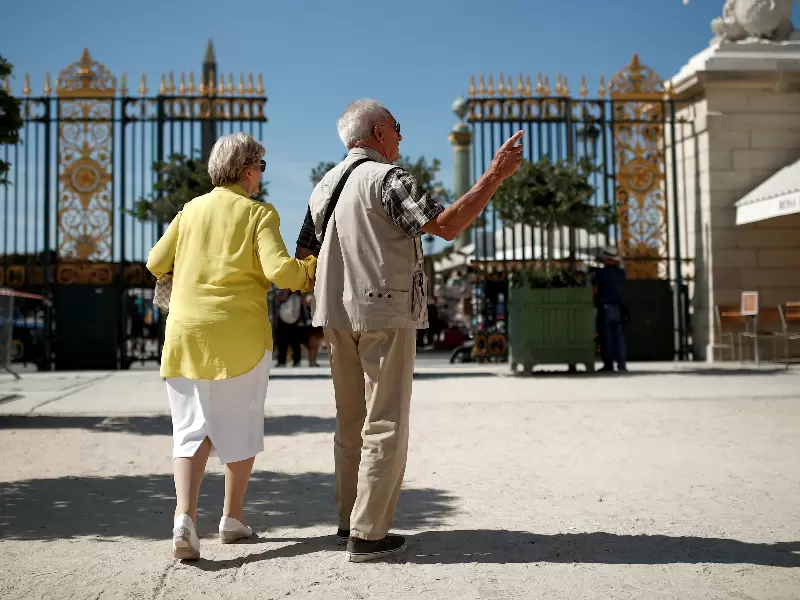
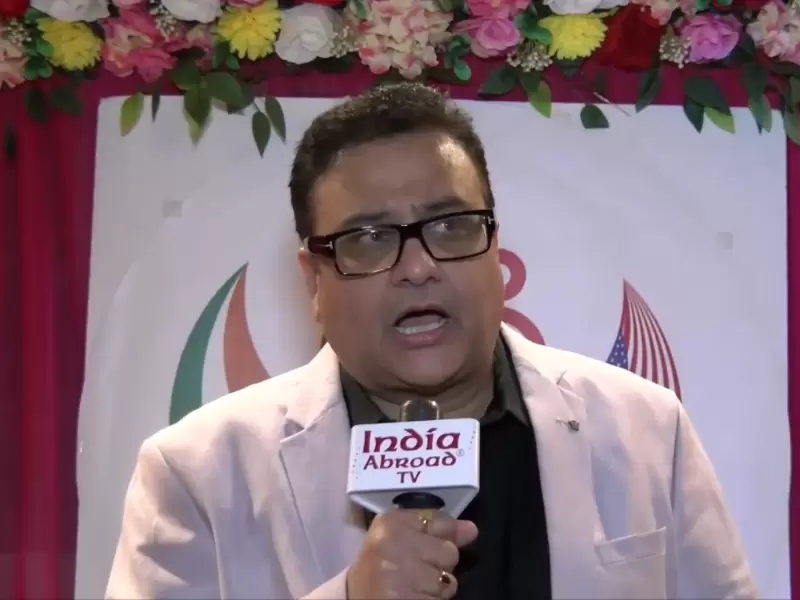
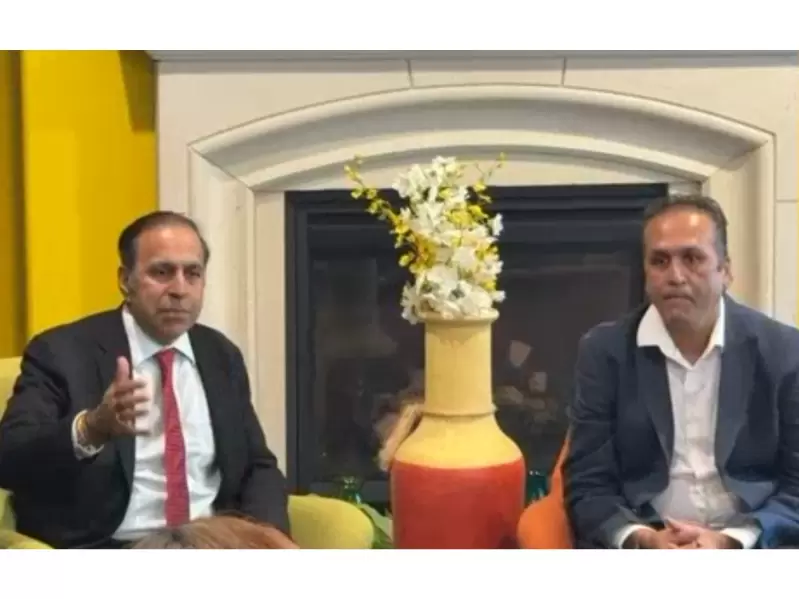



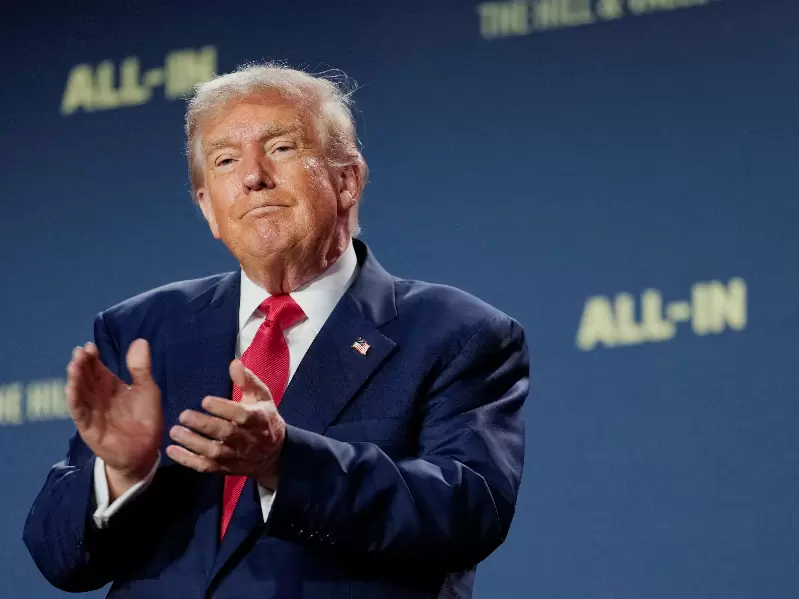

Comments
Start the conversation
Become a member of New India Abroad to start commenting.
Sign Up Now
Already have an account? Login